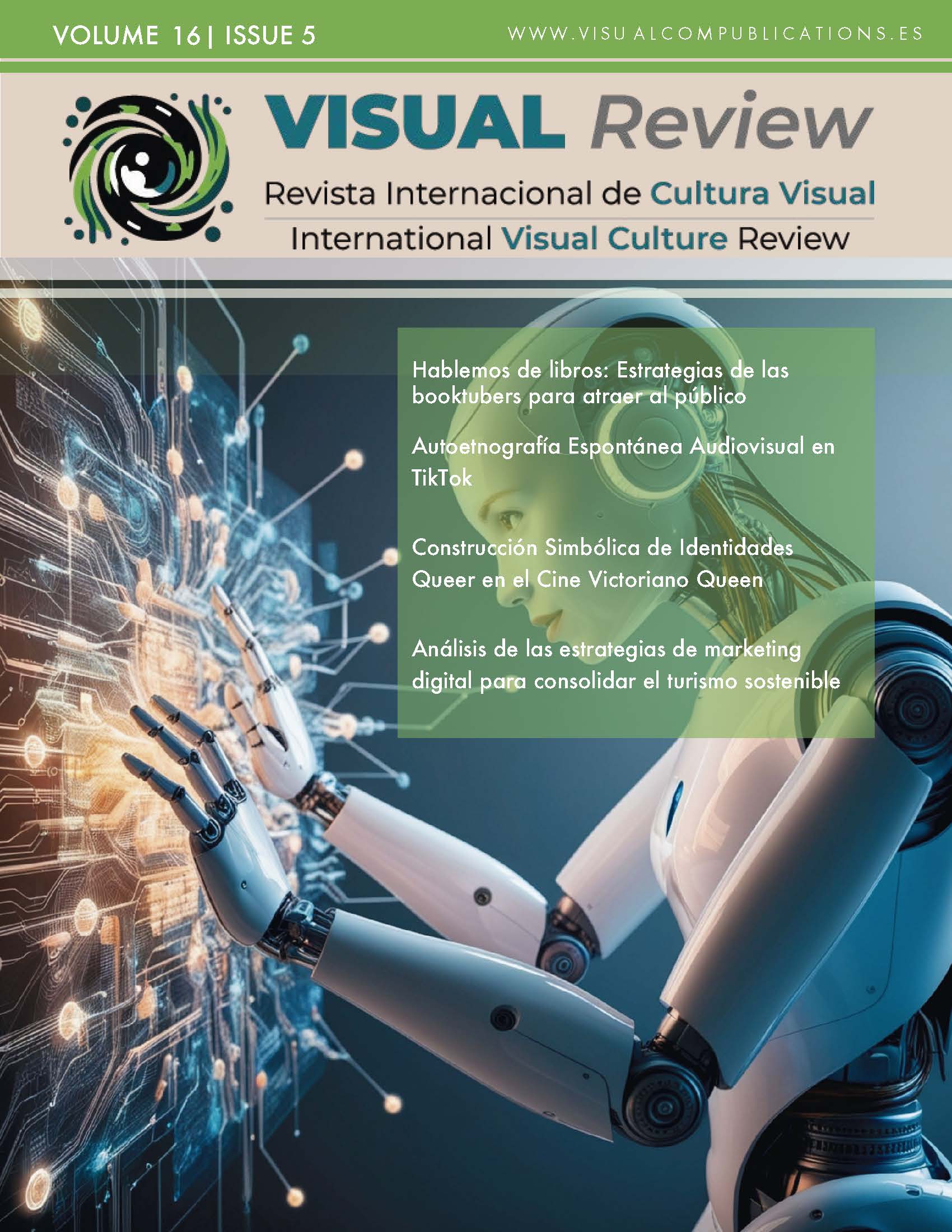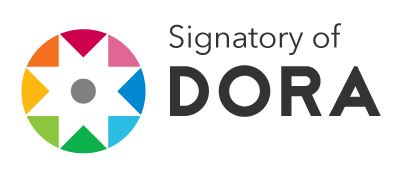X-threads as a Learning Stimulus for Universitary Students
DOI:
https://doi.org/10.62161/revvisual.v16.5290Keywords:
Twitter threads, Informative threads, Research Twitter, University TwitterAbstract
The article sheds light on how undergraduates in Marketing-related careers deepen their knowledge through the threads of the social network "X" (formerly Twitter).
By reading existing documentation and conducting student surveys, information is obtained on whether they represent a stimulus to deepen learning or are limited to being informative pills that begin and end in themselves, not motivating the student to further research.
The results offer a critical view of their role in the learning process, identifying the imprint they leave on students.
Downloads
Global Statistics ℹ️
|
313
Views
|
160
Downloads
|
|
473
Total
|
|
References
Agüero Pérez, M., y Lavilla Muñoz, D.J. (2014). #Informetwitter: cómo se hizo. Análisis del usuario de un nuevo medio de comunicación de masas con técnicas cualitativas. En J.E. Gonzálvez Vallés (Ed.), Redes sociales y lo 2.0 y 3.0. (pp. 331-345). Madrid: Visión Libros. https://www.visionlibros.com/index.php?route=product/productyproduct_id=6463ysearch=redes+sociales
Alegre, A. M. (2016). El Crossumer: la evolución del consumidor mediada por las tecnologías sociales y la hiperconectividad móvil. MÉI: Métodos de Información, 7(12), 5-16. https://doi.org/10.5557/IIMEI7-N12-005016 DOI: https://doi.org/10.5557/IIMEI7-N12-005016
Ayala Pérez, T., y Salgado, G. S. (2019). Géneros discursivos digitales: fanfiction y tuiteratura. Contextos: Estudios de humanidades y ciencias sociales, (43). https://revistas.umce.cl/index.php/contextos/article/view/1494
Baños González, M., y Rodríguez García, T. C. (2012). Imagen de marca y product placement. Madrid: ESIC.
Carballar, J. A. (2012). Social Media. Marketing personal y profesional. Madrid: RC libros.
Castro-Martínez, A., y Díaz-Morilla, P. (2021). Tuiteratura: contar historias con los hilos y recursos de Twitter. Ocnos. Revista De Estudios Sobre Lectura, 20(1), 82–95. https://doi.org/10.18239/ocnos_2021.20.1.2481 DOI: https://doi.org/10.18239/ocnos_2021.20.1.2481
Cea Esteruelas, M. N. (2010). Introducción al concepto de empresa periodística en Internet. Estudios sobre el mensaje periodístico, 16, 31-43. https://revistas.ucm.es/index.php/ESMP/article/view/ESMP1010110031A
Cervera Rodríguez, Á. (2016). Marcas lingüístico-discursivas en titulares de prensa en español actual. Literatura y lingüística, (34), 265-294. https://dx.doi.org/10.4067/S0716-58112016000200013 DOI: https://doi.org/10.4067/S0716-58112016000200013
De la Piedra, E. S., y Meana, R. J. (2017). Redes sociales y fenómeno influencer. Reflexiones desde una perspectiva psicológica. Miscelánea Comillas. Revista de Ciencias Humanas y Sociales, 75(147), 443-469.
de Ramón Carrión M. (2017). Los hilos de tuits como articulación del relato histórico fragmentado. Historia y Comunicación Social, 22(2), 347-362. https://doi.org/10.5209/HICS.57848 DOI: https://doi.org/10.5209/HICS.57848
Ferrari, M.; Pesantez-Coronel, P.; Ugalde, C. (2020) Proceso de naming: teoría vs práctica, Pensar la publicidad14(1), 13-27. http://dx.doi.org/10.5209/pepu.67142 DOI: https://doi.org/10.5209/pepu.67142
Fog, K., Budtz, C., y Yakaboylu, B. (2005). Storytelling. Berlin: Springer.
Giachanou, A., y Crestani, F. (2016). Like it or not: A survey of twitter sentiment analysis methods. ACM Computing Surveys (CSUR), 49(2), 1-41. https://doi.org/10.1145/2938640. DOI: https://doi.org/10.1145/2938640
Góngora, G. y Lavilla, D. (2020). La importancia de la construcción de marca en Instagram para las empresas periodísticas. Figuereo Benítez, J.C. (Ed.). Estudios multidisciplinarios en comunicación audiovisual, interactividad y marca en la red (pp. 129-138). España: Egregius Ediciones. https://hdl.handle.net/11441/95647
González-Bengoechea, A., Gil-Ruiz, F. J., Hernández-Herrera, M., y Ayestarán-Crespo, R. (2023). Neuromarketing and e-commerce: analysis of over the top platform homepages. International Journal of Services Operations and Informatics, 12(3), 253-266. https://doi.org/ 10.1504/IJSOI.2023.132354 DOI: https://doi.org/10.1504/IJSOI.2023.132354
López-Meri, A., y Casero-Ripollés, A. (2017). Las estrategias de los periodistas para la construcción de marca personal en Twitter: posicionamiento, curación de contenidos, personalización y especialización. Revista Mediterránea De Comunicación, 8(1), 59–73. https://doi.org/10.14198/ MEDCOM2017.8.1.5. DOI: https://doi.org/10.14198/MEDCOM2017.8.1.5
Martí, José y Muñoz, Pablo (2008). Engagement marketing, una nueva publicidad para el marketing de compromiso. Prentice-Hall.
Mohd Suki, N. (2007). Mobile phone usage for m‐learning: comparing heavy and light mobile phone users. Campus-Wide Information Systems, 24 (5), 355-365. https://doi.org/10.1108/10650740710835779 DOI: https://doi.org/10.1108/10650740710835779
Ocaña, S. (2006). El poder del buzz marketing. Las marcas profesionalización el boca oreja, un medio que convierte al consumidor en protagonista. Anuncios: Semanario de publicidad y marketing, (1146), 24-26.
Pedraja-Rejas, L., Rodríguez-Ponce, E., y Rodríguez-Ponce, J. (2008). Importancia de los estilos de liderazgo sobre la eficacia: un estudio comparativo entre grandes y pequeñas y medianas empresas privadas. Revista de Ciencias Sociales, 14(1), 20-29. https://repositorio.uchile.cl/handle/2250/127643 DOI: https://doi.org/10.31876/rcs.v14i1.25384
Sánchez, C. C., y Otero, T. P. (2012). Nuevas narrativas audiovisuales: multiplataforma, crossmedia y transmedia. El caso de Águila Roja (RTVE). Revista ICONO 14. Revista científica de Comunicación y Tecnologías emergentes, 10(2), 102-125. https://doi.org/10.7195/ri14.v10i2.156 DOI: https://doi.org/10.7195/ri14.v10i2.156
Sánchez-García, P., Campos-Domínguez, E., y Berrocal Gonzalo, S. (2015). Las funciones inalterables del periodista ante los perfiles multimedia emergentes. Revista Latina De Comunicación Social, (70), 187–208. https://doi.org/10.4185/RLCS-2015-1042 DOI: https://doi.org/10.4185/RLCS-2015-1042
Subirats, J. (2001). El análisis de las políticas públicas. Gaceta sanitaria, 15(3), 259-264. https://doi.org/10.1016/S0213-9111(01)71557-9 DOI: https://doi.org/10.1016/S0213-9111(01)71557-9
Toffler, A. (1980). La tercera ola. Barcelona: Plaza y Janés.
Van Dijk, T. A. (2003). Ideología y discurso. Barcelona: Ariel.
Wang, J., Zhu, Z., y Caverlee, J. (2020, enero). User recommendation in content curation platforms. In Proceedings of the 13th International Conference on Web Search and Data Mining (pp. 627-635). DOI: https://doi.org/10.1145/3336191.3371822
Downloads
Published
How to Cite
Issue
Section
License
Copyright (c) 2024 VISUAL REVIEW. International Visual Culture Review / Revista Internacional de Cultura Visual

This work is licensed under a Creative Commons Attribution-NoDerivatives 4.0 International License.
Those authors who publish in this journal accept the following terms:
-
Authors retain copyright.
-
Authors transfer to the journal the right of first publication. The journal also owns the publishing rights.
-
All published contents are governed by an Attribution-NoDerivatives 4.0 International License.
Access the informative version and legal text of the license. By virtue of this, third parties are allowed to use what is published as long as they mention the authorship of the work and the first publication in this journal. If you transform the material, you may not distribute the modified work. -
Authors may make other independent and additional contractual arrangements for non-exclusive distribution of the version of the article published in this journal (e.g., inclusion in an institutional repository or publication in a book) as long as they clearly indicate that the work was first published in this journal.
- Authors are allowed and recommended to publish their work on the Internet (for example on institutional and personal websites), following the publication of, and referencing the journal, as this could lead to constructive exchanges and a more extensive and quick circulation of published works (see The Effect of Open Access).













